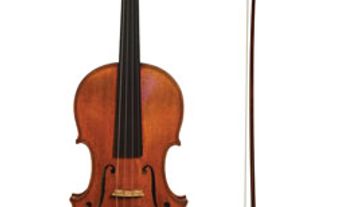Canadian Conference of the Arts
The Canadian Conference of the Arts was founded, as the Canadian Arts Council, in December 1945 to further the cultural development of the Canadian people, work for the encouragement and advancement of the arts in Canada and serve the highest interests of Canadian artists. The founders, and first members, were the 16 artists' organizations that had come together in the spring of 1944 to prepare and present what became known as "the artists' brief" to the House of Commons Special Committee on Reconstruction and Re-establishment. With the establishment of the Canada Council in 1957 - and the realization of one of the recommendations of the brief - the CAC changed its name to the Canadian Conference of the Arts.
In October of 20112, following 67 years of advocacy for the arts at the federal level, the Canadian Conference of the Arts announced that it would begin winding down operations after its funding was eliminated as part of a general deficit reduction program on the part of the Federal Government. Prior to its demise, the CCA had been been receiving up to 60% of its budget from the government of Canada, but had been working towards a move to a self-sustaining financing model. Limited transition funding, however, meant that the organization was unable to develop new revenue streams. In announcing the decision, the CCA said that the organization would remain in a "dormant state" for a period of time in the hope that it can be revived by another interested group.
The CCA was a membership-based organization representing some 200 000 artists and cultural sector workers: creators, performers, technicians, producers and distributors, in all disciplines and in both official languages. The board of governors was elected by the members and represented all regions of Canada and the major disciplines of the arts and cultural industries.
Since its inception, the CCA had been active in bringing artists and cultural sector workers together, presenting their views to government, conducting research and disseminating information on developments and issues of interest. The organization has been effective on many fronts, perhaps most importantly in gaining recognition of the arts by all levels of government. A report of the Standing Committee on Canadian Heritage, "A Sense of Place - A Sense of Being: The Evolving Role of the Federal Government in Support of Culture in Canada" (June, 1999), acknowledged the major influence played by the CCA's "Final Report of the Working Group on Cultural Policy for the 21st Century." Later initiatives of the CCA included active involvement with the issue of culture in international trade agreements, implementation of Status of the Artist legislation at the provincial and federal government levels, promotion of arts and education, and the development of an international network for cultural NGOs.
In 1954 the CCA inaugurated its Diplôme d'honneur to recognize distinguished life-time service to the arts in Canada. It also presented the Rogers Communications Inc. "Media Awards for Coverage of the Arts" (English and French) and the "Keith Kelly Award for Cultural Leadership." The CCA was instrumental in establishing a number of other awards, including the Financial Post awards, acknowledging corporate sector support, and the Governor General's Performing Arts Awards.
The CCA was variously described as a service organization, a lobby group and an advocate for special interests. Whatever the label, the CCA was a unique organization bringing together sometimes disparate interests to address common concerns. As the arts and culture sector and the issues affecting it became increasingly complex, the Canadian Conference of the Arts was testimony to the foresight of its founders.

 Share on Facebook
Share on Facebook Share on X
Share on X Share by Email
Share by Email Share on Google Classroom
Share on Google Classroom


